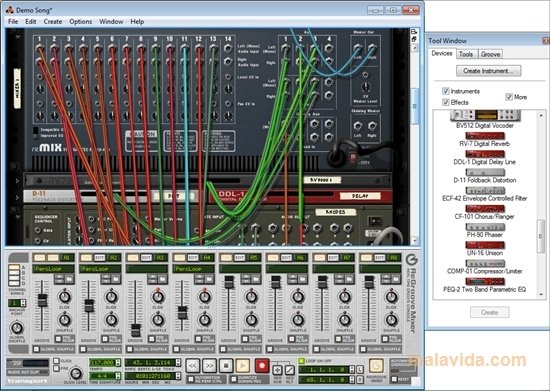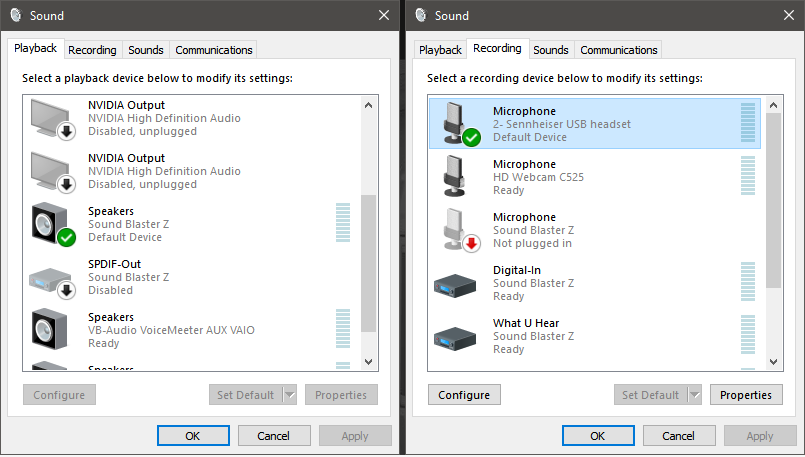Using Asio4all in DAW or FL studio click on activate or deactivate respective devices from the Asio4all setting. It is simple as you find the button corresponding to every device in the setting option. On being active, the arrow and blue button will confirm it. Also, do not forget to activate the devices on the input and output side. Just download the free trial version of FL studio and install it. It will install the FL studio ASIO driver, and then you can get rid of FL. You get to keep the driver. Note: If you downloaded other programs, such as ASIO4ALL, when you installed FL Studio, it will have to be uninstalled separately. Just follow the same steps, but this time click on ASIO4ALL and choose to uninstall it. FL Studio Overview. FL Studio (known initially as Fruity Loops) is an excellent music editing platform for Windows and Macs.
FL Studio: System Settings
3rd party ASIO driver: ASIO4ALL
The FL Studio installation includes a 3rd party ASIO driverASIO4ALL. There aretwo advantages:


Speed:ASIO drivers (in general) allow lower CPU overhead and lowerbuffer settingsthan the standard Windows ('Primary Sound Driver', WDM Driver). If your audio interface has a native ASIO driver then we recommend you use that.
Multiple audio devices:Unique to ASIO4ALL, you can select inputs and outputs fromseparate soundcards/audio-devices, something that is not possible with standard ASIO drivers. This feature allows you to use aUSB microphoneinput and your regular soundcard output at the same time (see point 7 below).

NOTE:ASIO4ALL is a generic ASIO driver that works with most soundcards, your experience may be different, including long periods of silence and head-scratching. If ASIO4ALL doesn't produce any sound we recommend that you work through all the steps below including theTroubleshootingsection.
Using the ASIO4ALL Advanced Settings
This section explains how to use the ASIO4ALL settings.

Download Asio4all Driver For Fl Studio
PressF10on your PC keyboard and select the Audio settings by clicking on the speaker icon. Alternatively chooseAudio settingsfrom theOptions Menu.
SelectASIO4ALL v2as shown below.
To open the ASIO4ALL settings- Click on the 'Show ASIO panel' (shown above). The screenshot below shows ASIO4ALL in 'simple mode'. The 'spanner' button, on the lower-right, changes between 'simple' and 'advanced' modes.
ASIO Buffer Size- As shown above, the ASIO4ALL window allows you to adjust theASIO Buffer Size(Buffer length) settings to fine-tuneBuffer underrunissues. You can adjust the buffer length for each selected device (in this case the Creative SB X-Fi is selected, highlighted dark-blue). It is a good idea to set all devices you plan to use to the same Buffer Size.Select each deviceby clicking on the name so it becomes highlighted and then change the Buffer Size slider. The Buffer Size is displayed in samples, to convert from samples to milliseconds (ms) divide the Buffer length in samples by 44.1 (if your soundcard is using 44100 Hz) or 48 (if it is at 48,000 Hz). In this case, the soundcard is set to 44100 Hz so the Buffer length of 448 samples = 10 ms (approximately).
WDM Device List- The screenshot also shows 2 devices in theWDM Device List(Creative SB X-Fi and Plantronics Headset). The devices that appear in your list will probably be different and are those audio devices that have soundcard drivers correctly installed and registered with the Windows operating system. If your sound is working correctly under Windows, there should be at least one device listed (something withRealtekorAC97in the title are common for motherboard-based soundcards). If nothing is showing in this list, re-install the soundcard drivers for your PC, reboot and look here again.
Advanced settings- Make sure you are in Advanced mode as shown below. Click the Spanner (lower-right) to change between 'Simple' and 'Advanced' modes.
Active devices- Only active devices (and their active Inputs/Outputs) can be used by FL Studio, i.e show in theMixer IN and OUT menus.This is the step that is required to use a USB microphone with your soundcard.To activate a deviceclick the button in front of the device name, the blue button & arrow will light to indicate the device isactive.You mustalso ensure that the device's Inputs (In:) and Outputs (Out:) are also activated. Click on any [+] squares in front of the device to expand the list of Inputs and Outputs and click on the activate buttons.NOTE:activating a device at the highest level does not necessarily mean its inputs and outputs are activated. For example, in the screenshot above thePlantronics HeadsetOutput is not activated and so won't be available in FL Studio.
Latency compensation In/Out- sliders. Leave these at the default settings. The ASIO4ALL driver reports to FL Studio the latency it adds to the audio stream, and this is taken into account by the program where appropriate. However, if you have measured the input/output latency of your soundcard using a loop-back cable, and know what you are doing, then set the 'Latency compensation' sliders according to your measured results.
Use hardware Buffer- Can reduceBuffer underruns. Whether or not it helps will depend on the design of your soundcard's design and drivers.
Always resample 44.1 kHz <-> 48 kHz- This option fixes ano soundissue onSigmaTel C-Major Audiodevices. If everything else seems to be correct on your soundcard settings and you are not hearing anything you can give this option a try.
Force WDM Driver to 16-Bit- This option fixes ano soundissue onSoundMax Digital Audiodevices. If everything else seems to be correct on your soundcard settings and you are not hearing anything you can give this option a try.
When you are done, close the ASIO4ALL options with the [X] window control in the top-right corner.
Troubleshooting
There is avideo tutorialon theASIO4ALL driver setupthat discusses the common problems.
Asio4all Fl Studio 20 Download
Make sure you are usingthe latest version of ASIO4ALL, install it and try again. The latest ASIO4ALL driver will be available here. Don't be afraid to try the latest Beta (if there is one).
Unavailable- If any of the inputs/outputs of the devices in the 'WDM Device List' have aRED Xthrough them, it means they are probably being used by another audio application. For example, programs such as 'MSN Messenger', 'Skype', media players etc. can tie up inputs/outputs so, close FL Studio, close any program that may use your soundcard and re-open FL Studio and the ASIO4ALL options.
Nothing shows- If your soundcard or itsIN/OUTputs don't show in advanced mode, try downloading the latest driver for your soundcard. This happens when the driver for your soundcard hasn't registered itself correctly with Windows.
No sound- If other applications are not audible or taking over the soundcard see 'Auto close device' on theAudio Settings. Otherwise, if you get no sound at all check the following:
Select all Outputs- In 'Advanced view' expand your Soundcard Inputs/Outputs andensure all Outputs are active. In the example above, the Creative SB X-Fi has its main analog output selected ('Out: 8x 44.1 1-192kHz, 32Bits') but the 'SPDIF' Output and 'Plantronics Head' set Output ('Out: 2x 6 4-48 kHz, 16 bits') are both deselected and so would not be available in theMixer.
Output Errors?- Make sure the Outputs are not showingUnavailableorBeyond logicas described elsewhere in this section.
Master Mixer track Output- Make sure thecorrectASIO Output is selected in the Master OUT of the MasterMixertrack. Try all Output menu options if you are not sure.
Switches- Try the 4 possible combinations of the 'Always resample 44.1 kHz <-> 48 kHz' and 'Force WDM Driver to 16-Bit' switches (Off/Off, On/Off, Off/On, On/On).
Any sound?- If there is still no sound, make sure you can hear sound from other Windows programs. If not then your problem isn't related to ASIO4ALL (try re-installing your soundcard drivers).
Crackling noises without the underrun count increasing- Check the following:
Switches- Try the 4 possible combinations of the 'Always resample 44.1 kHz <-> 48 kHz' and 'Force WDM Driver to 16-Bit' switches (Off/Off, On/Off, Off/On, On/On).
Hardware buffer switch- Try On/Off.
Buffer lengths- Each device in the 'WDM Device List' can have a uniqueASIO Buffer Sizesetting. Make sure all devices have the same buffer setting (the blue square indicates the setting of the non-selected device).
Plugins misbehaving- Crackling can also be caused byplugins behaving badly.
Beyond Logic- Similar to 'unavailable', if the control panel of your card provides the option to lock the sample rate deselect it, a known cause of 'Beyond Logic' errors. Also try closing and re-opening the control panel, unplugging/re-inserting USB audio devices and/or reinstalling the Windows (WDM) driver for the soundcard.
Check theASIO4ALL